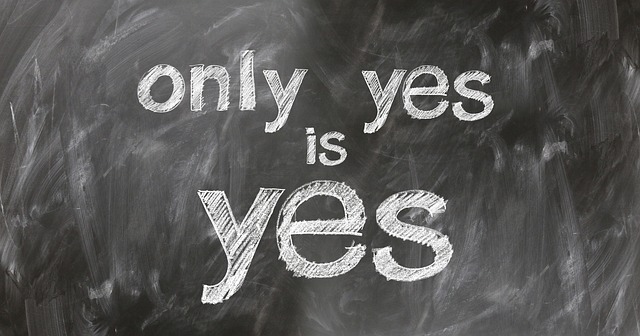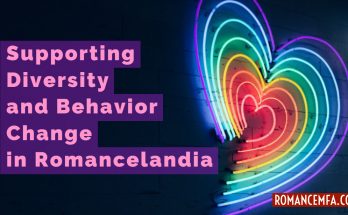Many others have spilt ink and pixels on the importance of consent and the squickiness of rapemance, so let’s take that as a given. If you’ve missed that conversation, here’s Jami Gold in 2018, or a 2010 opinion piece from Dear Author, or a 2018 op-ed in The New York Times, or as a recent discussion topic on #rwchat. This post is a starting list of resources for writing consent in romance.
Nadia Diament has a great article on writing affirmative consent, taking specific concerns, such as “My hero is super alpha and possessive, so it wouldn’t be consistent with his character to ask for consent,” and working through them.
Kelly Faircloth, in Feb 2018 piece for Jezebel, interviewed six romance authors on the importance of consent in romance, and includes their thoughts on “how they do it, on a craft level.” The conversation includes Sierra Simone (“If we’re going to get into any kind of penetration, whether it’s digital or intercourse, any kind of oral, to me those are things that need a pause before they happen.”), Maya Rodale: (“Sometimes I’ll be writing these scenes, and you’re typing, and you catch like—“His mouth crashed down on her,” or “he pulled her,” or he did this or he did that. And I go back and I check myself. Does that sound rapey? Does that sound potentially uncomfortable?”), as well as Alisha Rai, Sarah MacLean, Bree Bridges, and Donna Herron.
Alisha Rai is a big proponent of consent in romance. Take, for instance, this tweet from Jan 2018, cited in many of the articles about consent in romance, and providing a concrete textual example of writing consent in romance.
I am aghast at the people trolling me with BUT CONSENT WILL MAKE LIFE UNSEXY.
If you’re so stumped on how affirmative, verbal consent can make sex sexy, here is like, one of a billion examples I can think of. pic.twitter.com/YJO1G5UvZD
— Alisha Rai (@AlishaRai) January 15, 2018
Rai, was also interviewed on sex positivity and consent in this Nov 2017 piece for Shondaland. In the interview, among other things, Rai says:
When I’m writing, I’m very conscious of whose point of view I’m in, and who’s holding the power. And if it’s a man and a woman and the man is in the dominant position in whatever way, I’ll write it from her point of view, just to show that her head’s fully engaged and she’s consenting. I think it’s important from a craft perspective to make it very clear in whatever way you can that [both characters] are digging it.
From the Romance Writer’s of New Zealand newsletter, Heart to Heart, Jackie Ashenden wrote “How To Write An Alpha Male Without Making Him An Alpha-Hole” in March 2017.
“An alpha hero is not a collection of ‘alpha’ traits. He is a whole man, a whole person. His alpha-ness is not the extent of his personality. He will have a distinct personality all of his own, a backstory, opinions, likes and dislikes. In other words he’s not a cardboard cut-out with the words ALPHA stamped across him in large friendly letters. This is where alphas get a bad rap in my opinion. Many heroes are created who act like dicks merely because the writer thinks that’s how alpha males act.”
For additional examples of consensual scenes in romance, look at those included in this Publisher’s Weekly piece from Nov 2017, “It’s Still Complicated.” It’s one of three parts which also address safe sex with regard to STIs, as well as consent and safe sex in LGBTQ romance, in which Ruth Sternglantz points out,
There’s no tradition in lesbian romance of the trope of “she said no but she meant yes.”
I also recommend “Why We Need Consent in Romance” by sex educator Tori Lynne, who includes links to several resources on discussing and research sexuality of all stripes and experiences, both positive and negative, if you are using the trope of characters overcoming past trauma.
You can also consult RAINN’s page on “What Consent Looks Like,” or read Teen Vogue’s April 2016 piece, “Everything You Need to Know About Consent That You Never Learned in Sex Ed.”
Sometimes it helps to have examples from other media. Here are Marie Claire’s five times that TV got sexual consent right, and PopBuzz on consent used in an episode of ‘The End of the F***ing World‘.
For counterexamples and things to avoid, here are five tropes that the Mythcreants blog has identified as creepy, starting with “the sleeping kiss,” a brief column on the scenes in 50 Shades of Gray which meet the legal definitions of rape and sexual abuse, and a discussion of “dub-con” or dubious consent in paranormal romance.
For some in person help on this topic, if you are headed to the New England Chapter of RWA’s conference at the end of April 2018, their schedule includes a workshop on the topic “Making Consent Sexy: Creating a Trigger-free Love Story” with a panelists Stacey Agdern, Adriana Anders, AJ Cousins, Robin Covington, Andie J. Christopher, Stacey Donovan, and Tamsen Parker.
Finally, here’s a bonus link to “Remnants of the Bodice Ripper: How Consent is Characterized in Heterosexual and Lesbian Erotic Romance Novels“, a 2017 senior thesis by Audrey Miles Malloy, Bard College.



